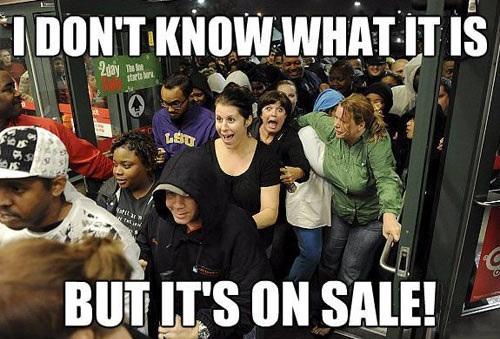 |
| (via) |
Somehow the weeks from September to December managed to fly by in a blink as the semester is coming to an end. Having gotten a taste of marketing through my internship at A Bride's Day, a wedding photography/videography company, this past summer, I was able to learn more into the field during this class which I plan to take into internships I am hoping to have this upcoming summer. This course had many aspects to it that helped us not only learn the different parts to marketing, but also take the textbook terms and examples and apply them to everyday life.
We started off by looking at marketing on a broader scale. Looking at the 4 P's (product, price, promotion, place) and what marketing was in general. Marketing, being the
"...activity for creating, communicating, delivery, and exchanging offerings that benefits its customers, the organization, its stakeholders and society at large." (Kerin 5)
 |
| (via) |
"...involving aggregating prospective buyers into groups that both have common needs and will respond similarly to a marketing action."
They do this by segmenting the market of parents and families who they specifically aim at as their target market. They offer sweepstakes and offers as part of the campaign giving the target market incentive to participate. For more on the campaign check out their website at MasterCard #OneMoreDay "Priceless". Another part of the class this semester was working in groups for a Marketing Simulation where we created a backpack we worked on branding and selling to a specific target market throughout the semester. My group was "Yik Yak Backpacks" where our mission was to:
“The mission of YikYak Backpacks, is to provide affordable, high quality backpacks to children and young adults while satisfying the needs of the community at large. We also strive to take care of employees by providing equal benefits and above average return to stockholders. Our objectives included providing a product that was simple, classic, colorful, yet affordable that appealed to both genders and a variety of demographics.”
Even though this was not my favorite part to the semester, I had a great group where we worked on trying to change and advertise our product to satisfy our target market's wants and needs. We did this through looking at our finances and advertising, budgeting and pricing. Our original penetration pricing strategy, which is when you set an initial low price to draw in consumers, we changed but then later changed back to after realizing our target market was to be for children. It was a different kind of assignment for a class that tied in all the elements of the class together.
The main part that I enjoyed about the class was getting to look at real life examples to apply to the different marketing concepts we were learning and looking into household name companies in a different light. For example, Apple was used as an example multiple times for the way they customize their products for their consumers. Also we looked at their skimming pricing strategy, which is when a company sets an initial high price that desiring customers would be willing to pay. How is this successful for them even though it could be expensive for the consumer? This is because of their marketing strategy and timing of releasing new products. I referenced Apple in previous blog posts, especially in Blog 8: Apple Profile where I talked about their success in having multiple product lines within their company which also helps generate profit. This included their line of music players called IPods, their cell phones IPhones, and their Mac laptop line. Comparing Apple and other businesses helped in connecting all the topics, terms and concepts discussed in class to everyday life.
I enjoyed getting to take marketing this semester as it pertains to the field I am hoping to go into after college. As I said earlier on, I am hoping to work in the wedding industry with events and public relations. Since I am a business minor I thought taking the marketing class over finances would be more relevant and would let me get the most out of my minor. I am glad I took the class and was able to get the background I could in the aspect of business.

















